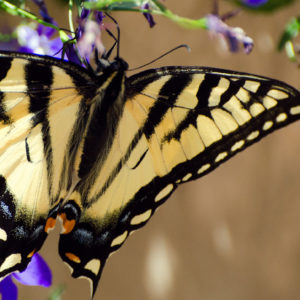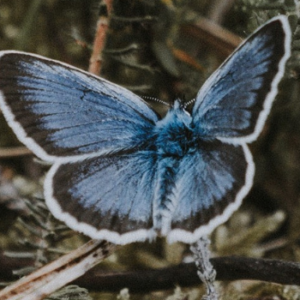Off-the-Beaten Path: A Visit to Mexico’s Cerro Pelón Monarch Butterfly Reserve
Each autumn, millions of monarch butterflies make the journey thousands of kilometres south from east of the Rocky Mountains to a small area of high-altitude forest near Mexico City. This is where they roost in colonies from November until March. It’s a beautiful annual migration—butterflies return to the same trees in the same forest that earlier generations left three or four years earlier.
Cerro Pelón (which loosely translates to Bald Hill) is one of four mountain-top butterfly sanctuaries open to the public; and what a fabulous experience we had there in late February! Cerro Pelón is the most pristine and least touristic of these sanctuaries—partly because access is more challenging. Cheryl Witoski and I hiked six kilometres (with an ascent of 800 metres!) up to the colony; the other visitors that day rode horses from the sanctuary entrance in the village of Macheros (which, appropriately, translates to mean stables). Both sites also provide super bird watching opportunities. We identified a mountain trogon, a red warbler, and a Oaxaca sparrow among other less-flashy species.
The most awe-inspiring part of our hike began halfway up the
mountain. It was sunny and late in the morning, and what I estimate to be
hundreds of thousands of monarchs were fluttering down the narrow canyon to
seek the warmth of the sun. We had to stop in places to avoid trampling masses
of butterflies that were resting along the path’s sunny spots.
Monarchs roost in different locations on Cerro Pelón depending on the year, and their colony often shifts as the season progresses. The butterflies do not limit themselves to oyamel fir trees as has been suggested; at Cerro Pelón they also roost in Mexican pine and Mexican cedar trees.
Illegal logging threatens monarch butterflies and the high-altitude forest ecosystem that supports them. Local villages such as Macheros are not wealthy, and tourist revenue associated with monarch sanctuaries (e.g., guiding, accommodation) is an important part of the local economy that reduces the economic attraction of illegal logging. The conclusion from my visit is that local communities should be more involved in the management of the sanctuary through monitoring of monarch populations, public education, forest conservation, and silviculture.

To that end, Ellen Sharp and Joel Moreno, the owners of J.M. Butterfly B&B in Macheros, established Butterflies and Their People, a non-profit organization that creates jobs for local people and protects the monarch’s valuable forest habitat. Five local villagers are currently employed as guardians to watch over the Cerro Pelón Monarch Sanctuary and conduct forest patrols to dissuade illegal logging. Since its launch, the organization says clandestine logging of the sanctuary’s core protected area has dropped by 87 percent.
Please
consider making a financial donation to support this remarkable project
to conserve the monarch butterflies that share a home between Canada, Mexico,
and the United States.
We can also do our part to conserve
and create Monarch Butterfly habitat here in Canada—imagine flying south for the season only to return and
realize your northern home had shrunk! Southern Alberta, Saskatchewan,
Manitoba, Ontario, Quebec, and the Maritimes each have pockets
of butterfly habitat.
Creating monarch-friendly habitat starts in your own backyard, where growing native flowers and milkweed plants provides the preferred food for our fluttering friends. At a larger scale, creating pesticide-free open spaces and protecting our grasslands and meadows will ensure monarchs always get the welcome home they deserve. Making room for nature means supporting the migration of monarchs for years to come.



